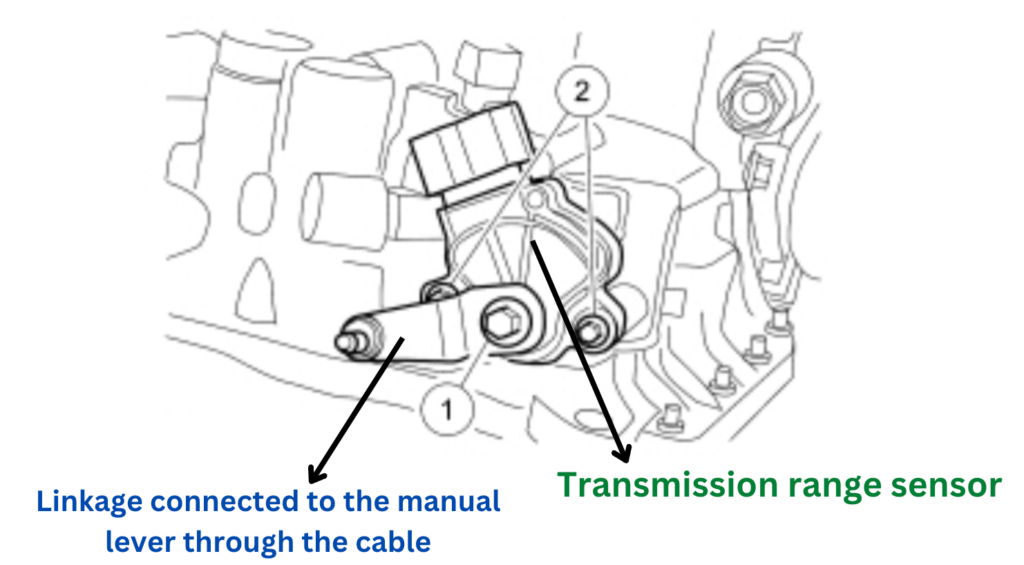Car Won’t Move In Any Gear In Automatic Transmission: 7 Potential Causes
A car not moving in any gear with an automatic transmission is often because there is not enough transmission fluid. This stops the right pressure and smooth gear shifting. Other things can also make the car not move in automatic transmission: Old, dirty fluid; Faulty PCM software; Defective pressure control and shift solenoids; Blocked passages in the transmission valve body; Clogged transmission filter; Damaged shifter cable or linkage; Worn clutch pads; and a Broken axle.
In automatic transmission, gears shift automatically based on what the engine needs. They also shift based on where you put the gear lever.
But sometimes there are problems. The automatic transmission parts can break. The sensors can also fail. Then the car’s computer can’t shift gears right.
If that happens, your automatic car won’t move in drive or reverse. It will get stuck even though the engine is running. In this guide, we will talk about why an automatic car won’t move in any gear. We will also discuss how to fix it.
Also Read: Transmission shifting hard when cold
- Low transmission fluid level is a common cause of automatic transmission problems. Check levels and top up if needed.
- Faulty sensors like the transmission range sensor can send incorrect signals to the transmission computer, preventing shifting.
- Worn shifter cables or linkages can disconnect the shifter from the transmission, not allowing gear engagement.
- Clogged valve body passages or stuck solenoids affect hydraulic pressure for shifting. Test solenoids for faults.
- Worn clutches and bands will slip and not engage gears properly. Replace if worn out excessively.
Causes of Car Not Engaging In Any Gear Automatic Transmission
Here are the causes of car won’t shift in any gear automatic transmission:
1. Check Engine Light Is On
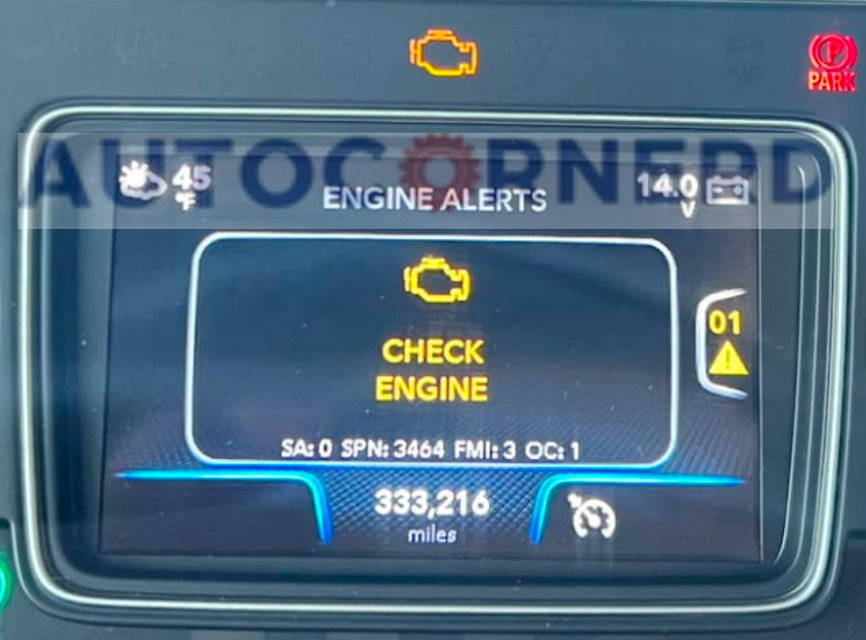
Sometimes, the car won’t after the second gear in an automatic transmission, it may be due to the check engine light.
Your first action should be to see if the check engine light or traction control light illuminates on your dashboard. If it is, chances are that the PCM has put your engine in a reduced power mode to protect it from further damage to your engine.
Due to reduced power mode, the PCM will not shift your transmission into the higher gears so that you do not drive your vehicle at higher speeds. You should use the OBD2 scan tool to find trouble codes stored in your engine’s memory.
In my guide on causes of check engine light on, I’ve some troubleshooting steps to deal with the check engine light.
Some guys on forums just recommend clearing the codes and resetting the ECU using a scan tool without fixing the issue. This might resolve your gear shifting issue, but it will only be for a limited time. After driving a few miles, the check engine light will again turn on.
Note: It isn’t necessary that the check engine light is always on. Sometimes, there are trouble codes that do not turn on the check engine light. So, your first action should always be to use the OBD2 scan tool to detect any trouble codes.
Bonus Read: Car jerks when shifting to reverse
2. Dirty or Low Level Of Transmission Fluid
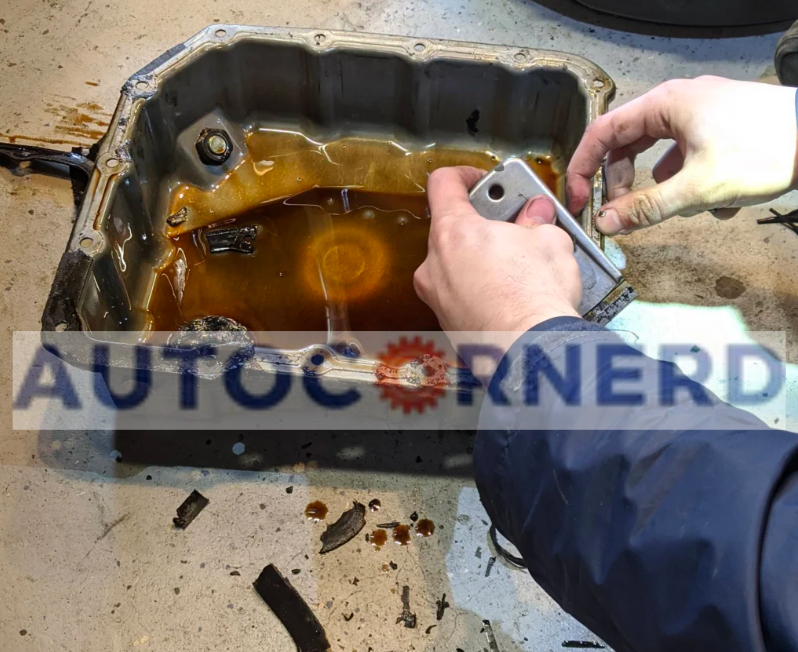
In automatic transmissions, the transmission fluid plays the same role as blood plays in our body.
Transmission fluid has the following functions:
- Transfers power from the flywheel to the transmission via a torque converter
- Engages clutches and bands by passing through the solenoid and valve body channels under pressure
- Lubricates gear train and differential
If the transmission fluid level is low and it fails to perform any of the above functions, your car might not engage in any gear in the automatic transmission.
If you haven’t replaced the transmission fluid after driving 60000 miles or 3 years, you should do a transmission flush.
Note: If the transmission fluid is reddish-brown or yellow colored, you should change the transmission oil and transmission filter. If transmission fluid is dark black and has suspended particles, avoid transmission flush as it will further damage your transmission.
How to check?
To check the transmission fluid, you will find a dipstick under the hood. You don’t want to mix up the transmission dipstick with the engine oil dipstick. The two are different. Also, you should start the engine and let it warm up to normal operating temperature before measuring the level of transmission fluid.
Be sure your car is on flat ground when you check the transmission fluid. Putting your car in drive, neutral, reverse, then back to park is usually a good idea. This lets the transmission fluid reach all the channels in the transmission system.
Also, make sure the transmission isn’t leaking fluid from the system. If you find spots of transmission fluid on the driveway, jack up your car after filling the fluid. See if it’s leaking from the torque converter, gearbox, or transmission pan.
Moreover, make sure that transmission isn’t leaking from the transmission system. If you find spots of transmission fluid on the driveway. After filling the transmission fluid, jack your car up and see if the transmission fluid is leaking from the torque converter, gearbox, or transmission pan.
3. Broken Shifter Cable or Shifter Linkage
A broken or disconnected shifter cable or linkage can stop your car from moving in any gear. This happens with automatic transmissions.
If the gear lever moves freely without resistance when you change gears, the shifter cable is likely broken or not connected.
The shift cable joins the gear lever to the transmission. It lets the transmission engage the right gear set by moving it to the correct place. This connection helps the transmission know what gear the shifter is in.
When you move the gear lever, you switch the transmission modes mechanically. For example, low gear, sport mode, gear 1, park (P), drive (D) and neutral (N).
You can find the shifter cable by looking underneath the vehicle at the transmission on the driver’s side of it. So, if the linkage or cable of the gear shifter is broken or bent, the PCM will not be able to determine which gear the manual lever is in.
Fixing shifter linkage and cables is a very delicate process as it has to be exactly done based on the engine’s specifications. So, you have to consult the service manual of your vehicle. Also, the torque requirements for tightening of bolts of the shifter level are given so that it does not come loose.
4. Malfunctioning Transmission Range Sensor/Neutral Switch
A malfunctioning transmission range sensor will not be able to coordinate with the position of the gear shifter, due to which your car won’t engage in any gear.
For instance, if your gear shifter is in P mode, the malfunctioning transmission range sensor will send wrong signals to the PCM, due to which PCM will think that your car is in D. As a result, your car won’t move.
The transmission range sensor tells the PCM the position of the shift lever so that the PCM can interpret the gear position and speed in an automatic transmission system.
You’ll find the transmission range sensor outside the transmission case near the shifter linkage.
The transmission range sensor is also called a park/neutral safety switch or PRNDL input.
For the exact position of the TR sensor, you can use the service manual of your vehicle. From the service manual by Ford, I found the following schematic showing the position of the transmission range sensor.
How to diagnose?
If the transmission range sensor is malfunctioning, the OBD2 scan tool will show P0705, P0706 or P0707 error codes.
For some vehicles, like Toyota, Cadillac, Chevy, a bad transmission range sensor or neutral position switch can also show the P1780 trouble code.
If the transmission range sensor malfunctions, it will send the wrong information to the transmission control module. As a result, the transmission will not engage in any gear and your car won’t move.
5. Bad CV Axle
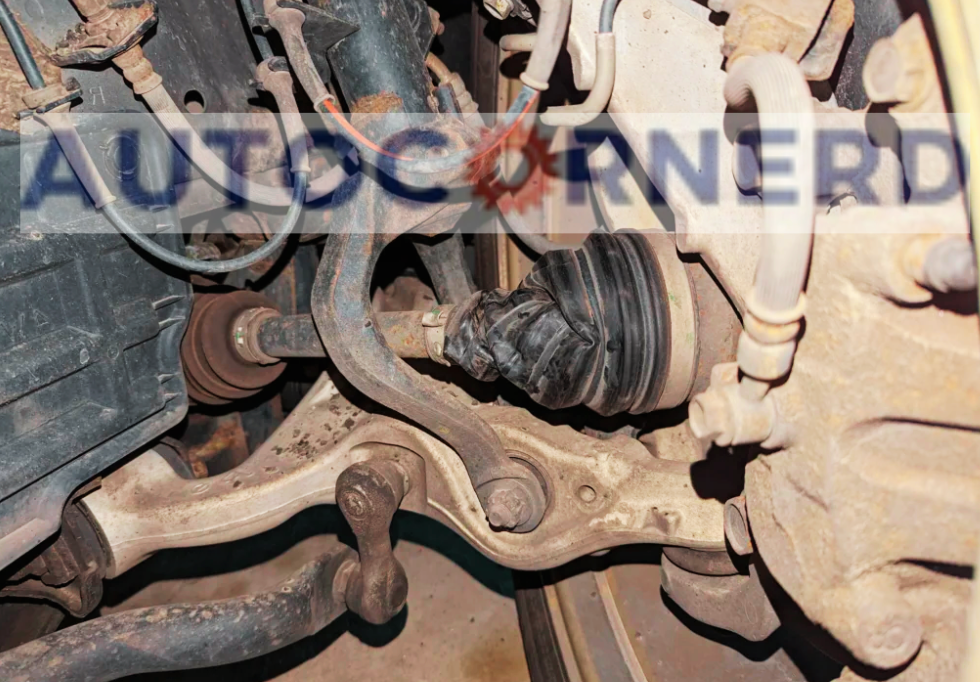
A bad CV axle can also cause your car not to move in any gear.
A CV axle is found in FWDs and AWDs. Both left and right wheels have their own CV axles.
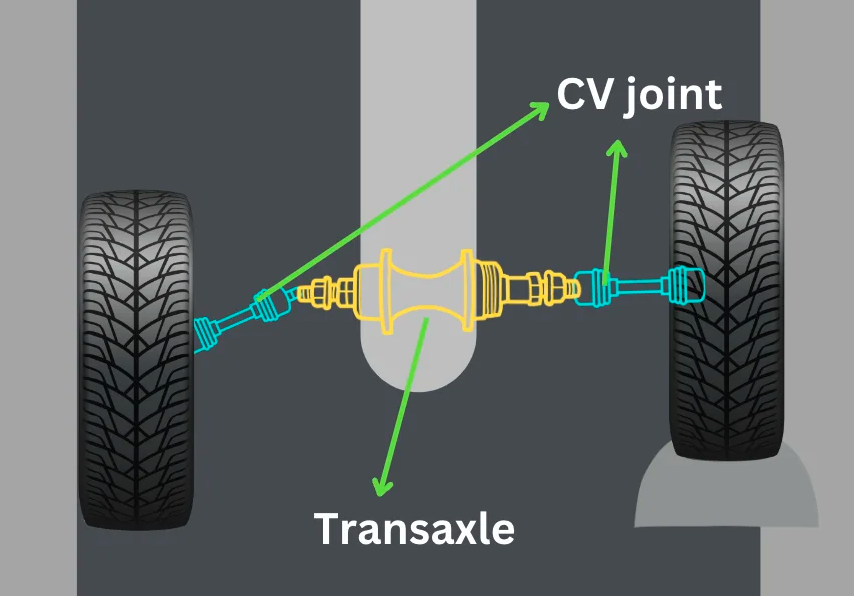
The outer CV joint is attached to wheel and inner CV joint is connected to the transmission.
When an outer CV joint fails, it produces a clicking noise. When an inner CV joint fails, it produces a clunking or grinding sound.
How to check?
To determine if your CV axle is bad, check for play or looseness in the CV joint by grabbing the axle and trying to move it back and forth.
Furthermore, if you apply brakes and speed at the same time while driving, it puts the CV axle under load. If the CV axle is loose/bad due to a damaged bearing, you will hear a clunking noise.
Moreover, when you remove CV joint rubber boot and bearing, you need to also inspect the splines on the CV shaft/axle. If the splines of CV axle shaft are worn, it can cause a play in the CV joint, which will prevent your car from moving in any gear.
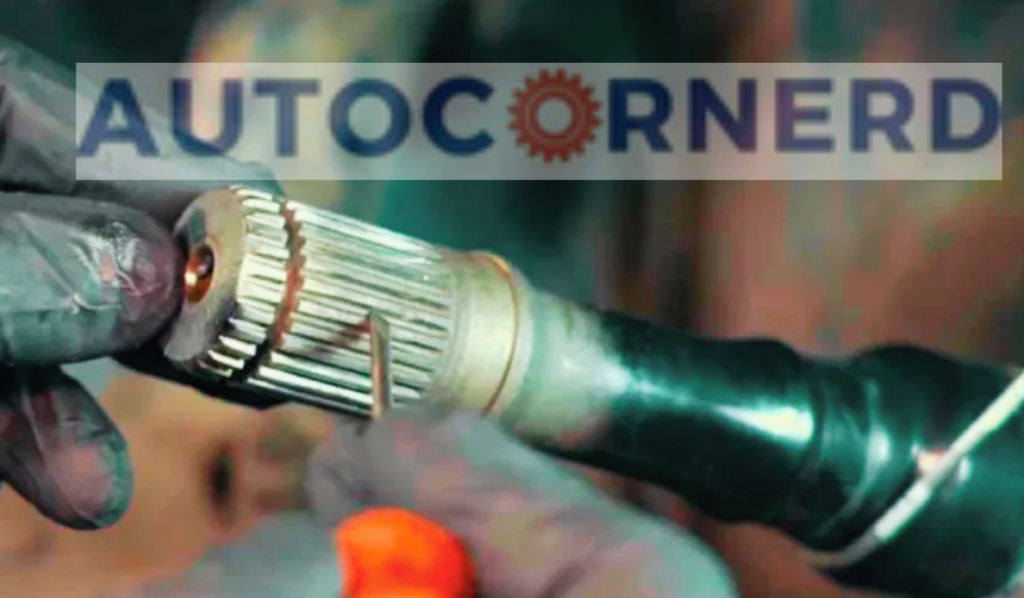
To remove the CV axle, you can watch the following video:
6. Bad Control Solenoids of Valve Body
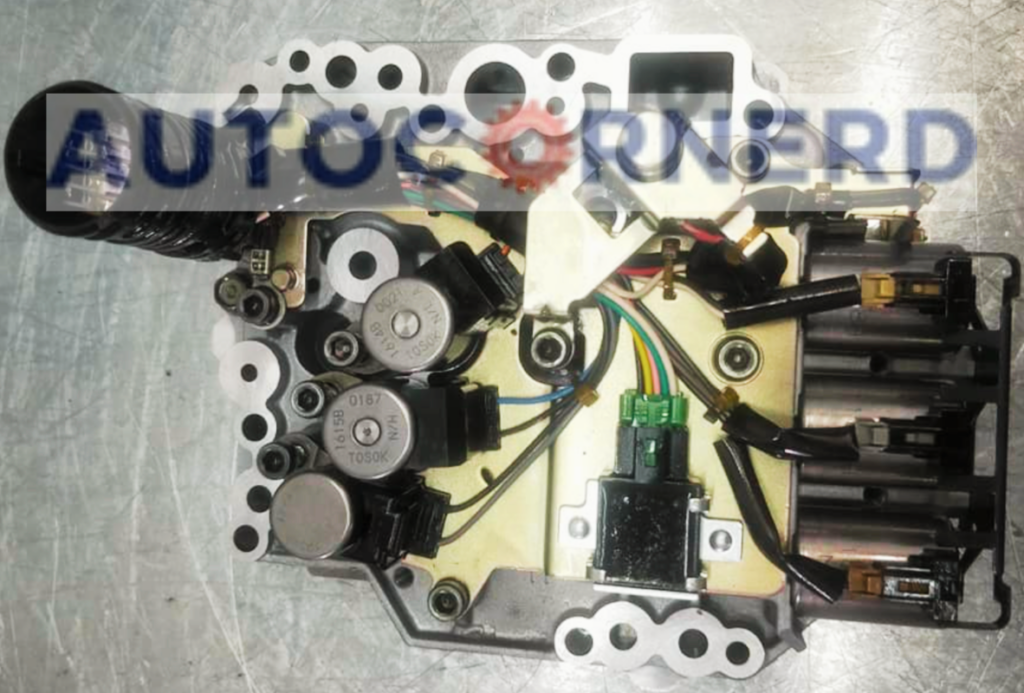
Bad solenoids in the valve body can stop automatic shifting. The valve body channels get clogged too. Junk and gunk in dirty transmission oil clog the channels.
If you remove the transmission pan, you will find a valve body of your automatic transmission system.
Control solenoids in valve bodies adjust the transmission fluid pressure. That pressure adjusts the clutch pressure for shifting gears. The ECU (Electronic Control Unit) controls the solenoid.
In the valve body, there is pressure solenoid and shift control solenoids. The pressure control solenoid maintains the desired pressure of oil in the valve body.
Shift control solenoids are open and closed to direct the oil through the channels in the valve to shift the gears.
In the below figure, I have shown the valve body and solenoids for Hydra-Matic 4L65-E:
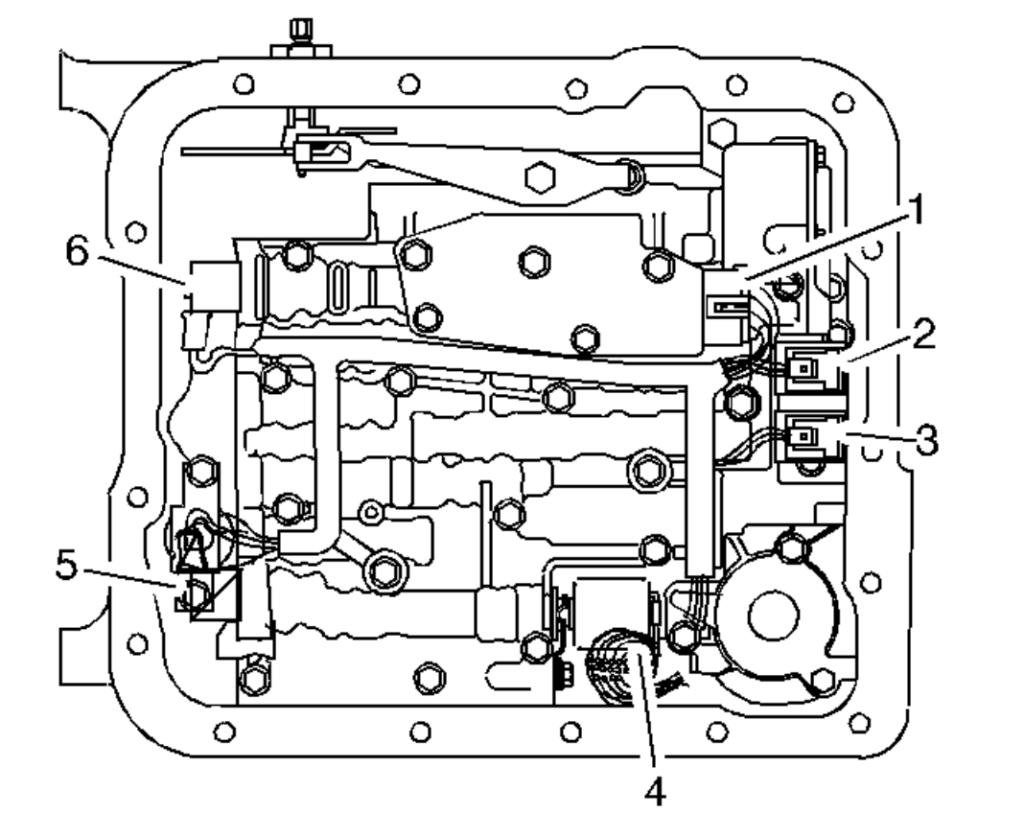
- Transmission fluid pressure switch
- 1-2 shift control solenoid
- 2-3 shift control solenoid
- Pressure control solenoid
How to diagnose?
First, you have to check if the harness connector of any solenoid is damaged. If the harness connector is fine, you should check each solenoid in the valve body.
The control solenoid becomes bad when it is stuck closed or stuck open. This disturbs the flow of transmission fluid through channels of the valve body and affects the gear shifting.
You can watch the below youtube video to test the solenoids of an automatic transmission system:
7. Worn-out Clutches and Bands
Worn-out clutches can slip and can lead to the car not moving in any gear in the automatic transmission.
In automatic transmission systems, the transmission fluid applies pressure on clutches and bands after passing through the channels in the valve body to engage gears.
If the clutches slip, they won’t be able to shift gears which will prevent movement in Any Gear for a Car with an Automatic transmission.
Clutch pads have abrasive material so that they have sufficient grip to apply pressure on different gear sets in the drivetrain.
When clutch pads wear out, they start losing their grip, due to which clutches slip and won’t engage the gear.
Replacement of clutches and bands is not an easy task. You have to completely dismantle your transmission to get access to the clutches. So, before proceeding to this step, start troubleshooting with the easy steps.
Steps To Diagnose Automatic Transmission Problems
- Check condition of transmission fluid first. The fluid in your transmission keeps everything running smoothly. If the transmission fluid looks dirty, you’ll want to change it. Put in fresh, clean transmission fluid and a new filter too.
- If the transmission fluid looks okay but seems low, just add more to get it to the right level.
- Next, check the shifter and linkage. Make sure the gear on the dash matches the gear you shifted to.
- Use an OBD2 scanner to check for any trouble codes from the transmission or engine. Sometimes engine misfires make it seem like the transmission is bad.
- Take a look at the transmission valve body and solenoids too.
- Don’t forget to check the battery. If it’s weak, the car computer can’t work right. Then your transmission won’t shift gears.
Final Thoughts About Car Not Moving In Any Gear Automatic Transmission
In summary, car not moving in any gear can happen because of low transmission fluid, dirty fluid, broken shifter cables, bad sensors/solenoids, worn out parts inside, or broken small parts that control gear changes.
First check fluid level and cables. Then test the sensors and solenoids. This will find the problem.
Fixing broken parts, changing fluid, or resetting the transmission computer can make the gears work again.
Changing transmission fluid regularly keeps dirt out. Finding problems quickly stops more damage inside the transmission.
Some First Hand Experiences Shared By Users In Different Communities
Our team conducted research across various online communities, forums, and subreddits to gather user comments and opinions on “car not moving in any gear”.
User 1 says:
Ran into this with my 2015 CR-V. It was a dead giveaway when the check engine light came on. Diagnostic code pointed to a transmission pressure sensor. Replaced it, and it runs like a charm.
User 2 says:
My 2014 Sentra had this issue. Initially confused, I found a loose wire in the transmission’s electrical system. A simple reconnection did the trick.
User 3 says:
Had a similar experience with my 2020 A6. After a bit of panic, I realized the transmission fluid was leaking. Fixed the leak and refilled the fluid, and it’s been smooth sailing since.
User 4 says:
My 2016 X5 wouldn’t move when I put it in gear. Turned out the issue was with the transmission’s torque converter. Had to replace it. Cost a bit, but it fixed the issue
User 5 says:
Experienced this with my Audi. The car seemed fine otherwise, but wouldn’t move in gear. After a thorough check, found out it was due to a failed transmission pump. Replacing the pump got it running again.
User 6 says:
Had a ’15 Camry that wouldn’t shift in gear. Initially thought it was a transmission issue, but it turned out to be a faulty shift solenoid. Discovered it after noticing the check engine light and getting a diagnostic at a local garage. Replacing the solenoid fixed it.
How did you fix issue of your car not shifting in any gear? Please vote.
[yop_poll id=”19″]

